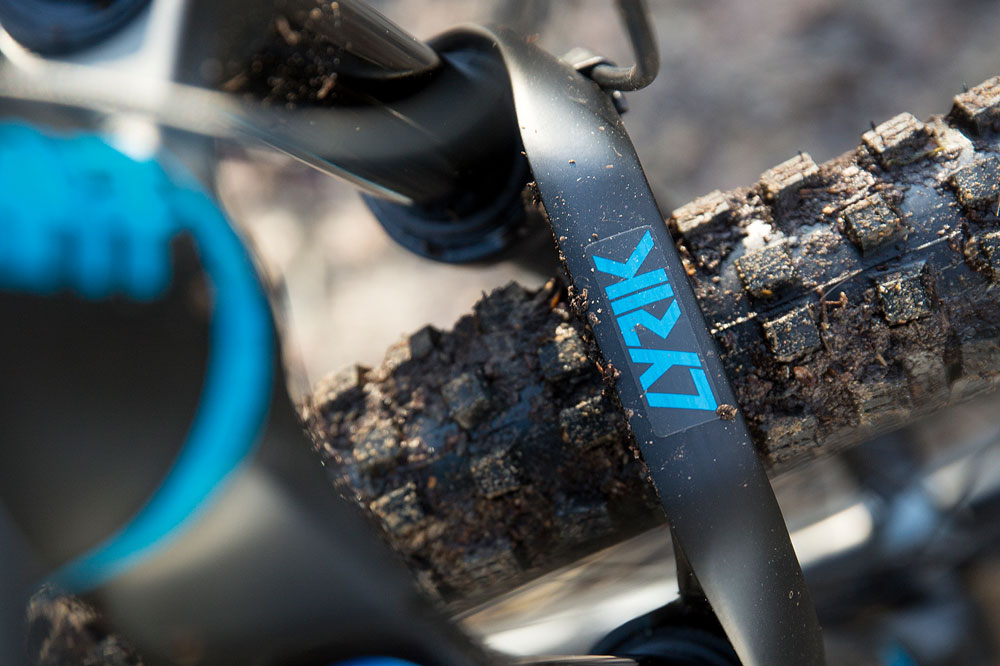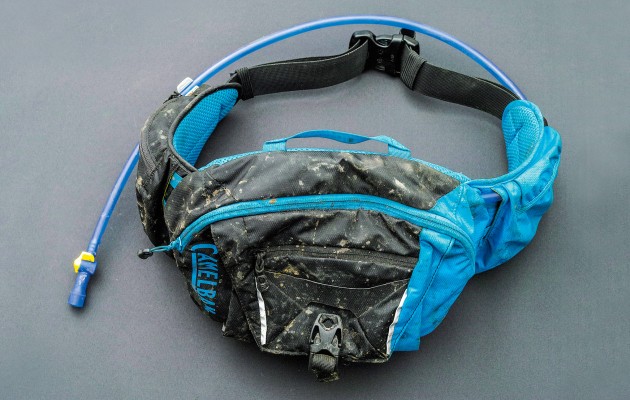What comes around goes around
Jesus isn’t the only one to be raised from the dead. Here are the greatest mountain biking resurrections. ‘New’ ideas that are as old as the hills.
By Danny Milner and Benji Haworth

1. RockShox Lyrik
The RockShox Lyrik was formerly the freeride fork of choice. It packed the punch of of a Boxxer with single crown versatility and was seen everywhere from the Red Bull Rampage to your local mini-downhill race.
Well mountain biking changed and so did the Lyrik. It came back for 2016 as an enduro monster pumping out up to 180mm of travel. It’s starting to become standard on race ready bikes and we reckon it’s even better than the Pike.
See also: RockShox Pike, RockShox Deluxe. What will be the next RockShox resurrection we wonder..?
2. Oval chainrings
These are eccentric, in both senses, so it’s not surprising they go back to Edwardian times, the golden age of bicycle invention. Seven decades later mountain bikes appeared in the UK and, within weeks, a complex oval Shimano Biopace chainset made its debut on an off-road frame. It was at the first rural commercial event, the ATB Expo at Small Dole, Sussex, in 1984, where DJ John Peel (RIP) ran the PA.
Bizarre music choices aside, the Biopace was on a unique frame built by English Cycles of Telford but it never quite captured the imagination. Nevertheless, it seems that even though they’re not round, they’ll keep coming round — Rotor, MRP and Absolute Black now make mtb versions.
The ovalisation is significantly different on these modern egg rings compared to Biopace. So don’t be scared if you remember the oddness of Biopace!
3. 29ers
How old is the 29er? Ten years? If you’d been walking the Chilterns 33 years ago, you’d have seen a man in tweeds and a flat cap pootling through the mud on a tall Cleland Aventura shod with 29in Hakkapeliitta snow tyres imported from Finland.
>>> Click here for the complete guide to mountain bike wheelsizes
He was Geoff Apps, freelance bike designer, and the tyres were the only ones of that diameter he could find in the world. They were so difficult to source they never caught on. Pity. The company that made them might have become successful. It was called Nokia.

4. Identiti Dr Jekyll
A 26in wheeled bike called the Dr Jekyll has been released by Identiti. No, you’ve not suddenly travelled back in time, the new bike is a MY2018 product. Set to coincide nicely with its 20th anniversary, the Identiti Dr Jekyll is a new take on the classic 26in wheel dirtjump bike.
5. Full-suspension
All the techie innovations of mtbs come from motocross, right? Wrong. The first all-round solution for softening the off-road ride came from cars. Dr Alex Moulton took the rubber suspension system he’d invented for the Mini and put it on the rear of a 20in wheel version of his step-through AM Series separable space-frames, all of which had sprung front suspension.
>>> What happens when you blow through your travel?
The AM-ATB was handbuilt in small numbers in Bradford on Avon as long ago as 1988 but production ended in 1992. If you see one in a barn, grab it — it’s collectible.
6. Mates’ meets
Brighton Big Dog is a contemporary antidote to the big glitzy mudfests. It has community spirit and no profit targets. Each rider’s main goal is to survive to the end so they can drink the free beer at the after-show beach party.
>>> How to organise a mates’ race
This welcome divergence from the scramble for success may have been founded in 2009 but it harks back to mtb’s primordial era of the Fat Tyre Five, the Wendover Bash and the Mountain Bike Club national series in the 1980s, when riders were trusted to observe the only rule: “Don’t cheat.”
See also: the return of the Malverns Classic in 2018.
7. Steel is real
The mega-makers have invested so much in aluminium and carbon fibre frames, they’ll be making them for years to come. And that’s fine because they are making some great bikes. But peek around the curtain and you’ll see something different. Another material, with different tube diameters and a different ride. It’s called steel. Is it new? Some old skool dudes like Chris Chance are making steel hardtails again (like the Fat Chance). He used to make them when Ronald Reagan worried the world. He used steel then. He’s using it now. More excitingly and interestingly, there’s a new wave of steel mountain bikes that are full suspension.

8. Trunnion shock mount
Trunnion mount rear shocks are popping up all over the place these days but – as with most things suspension – the idea is nothing entirely new. The pic above is actually of a trunnion shock mount from a GT Lobo from the late nineties.

9. Everyone’s gone 4-bar
Back in the early pre-patent era of mountain biking it felt like there were a lot more four-bar full suspension designs around. It was actually good ol’ Horst Leitner (yep, the Horst Link is named after him) of AMP Research who first popularised the location of a pivot on the chainstay. This helped separate drivetrain forces and braking forces from interacting/interfering with how the suspension operated. Yadda yadda yadda. Specialized bought Horst’s ideas and the patents. Then there weren’t quite so many 4-bar designs around anymore other than Speshes, especially in the USA. Specialized’s 4-bar patents started to expire a few years ago (circa 2012-2016) so now we’re seeing more and more full sus designs coming with a tell-tale pivot on the chainstay.

10. Dropper posts
You can probably make more of an argument for the Gravity Dropper as being the first true dropper post but let’s go further back than that and pay homage to an invention that first recognised the benefit of being able to raise and lower your saddle as easily as possible: the Hite Rite. A spring with two bracket clamps that enabled you to re-extend your seatpost to a preset height for pedalling. Yes, you had to operate a seat collar QR whilst riding along (or briefly stop and do it). Kind of ridiculous and dangerous and ugly. But worthy of its place in MTB ‘lore.

11. Bum bags
Blame enduro. It’s obviously nice to pare down things to save weight. But you have to take more stuff with you than will fit in your pockets. And it’s nice to have any weight lower down in your centre of gravity. Hence, the return of the bum bag.
>>> How to ride without a backpack

Pic: Intend Suspension / Facebook
12. Upside down forks
Were not (just) talking about the RockShox RS1, we’re more concerned with the niche items from a bespoke micro brands called Intend. You’ve probably not heard of them but we have an inkling that we may be seeing more of this one (Ger)man band in the not too distant future. What’s good about upside down forks? Lower unsprung weight and constantly lubricated seals.

Pic: Hope Technology
13. 6-pot disc brakes
Hope have recently been teasing 6-pot brakes. We can kind of see why madmen like Adam Brayton might feel like they need them but they’re are fabulously OTT for the rest of us. Hope actually made 6-pot calliper back in the early noughties with the Mono6ti (pictured above).
Let’s finish off this look down memory lane with a gaze into the crystal ball. Are there any ideas from the past that we reckon might be raised from the dead in the not-too-distant future…
Something that we’ll see more of: mismatched wheel size
Specialized Big Hit models used to have a 26in front wheel and a 24in rear wheel. Trek made a series of 69er bikes with 29in front wheels and 26in rear wheels. Some smaller US outfits like Ventana still make such layouts. So too do more progressively-minded brands like Germany’s Liteville, who make some bikes available in pretty much any combination of wheel sizes you want.
The modern move of bike frames that can be run as 29er or 27.5+ bikes leads us to believe that it won’t be long before bike riders (at least) and maybe some bike brands will start running bikes with 29in front wheels and 27.5+ rear wheels.
Something that we’ll never see again: bar ends
We all know someone (or someone who knows someone) who still runs bar ends. That doesn’t mean they’re coming back. TFFT.









